The Honeyballs at Newgardens
It's a balmy day early in September 1940. A group of young boys and girls are gathered on the forecourt of Parris's the newsagents at the top of Teynham Lane (now Station Road). They are excited because they have been excused from attending hop-picking with their parents this day and so are in earnest discussion regarding possible activities for the day ahead. Should they go to play and explore the cliffs at Sandowns, go for a swim in the 'Milly' at Conyer or spend some time in the brickfields. As they become involved in heated discussion a motor car arrives in the lane and draws alongside the pavement. All chattering stops when they become aware of the occupants of the vehicle. It is, of course, Mrs Honeyball in a fine outfit and wearing her usual style in wide-brimmed hats. She has her white Pekinese dog curled up on her lap. Beside her in the driving seat sits Mr Hyson, her long serving and trusted chauffeur. He is immaculate in his shiny peaked cap, tailored jacket and highly polished knee length boots as befitting a person who has complete responsibility for a new two-toned Sunbeam Talbot Coupe. She beckons to the youngsters who approach the car remembering to say "Good Morning Madam" at the same time touching their caps or curtseying knowing that they are about to receive maybe as much as two pence with which to buy sweets. Accepting the coppers offered they thank her earnestly and dash into the shop to spend their new found wealth, further activities for the day momentarily forgotten.
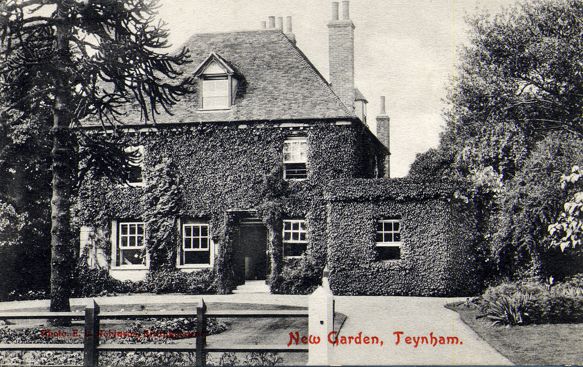 The older residents who lived in the village at that time will recall similar gestures made by Mrs Honeyball throughout the time that she lived here. They will remember those times when she generously allowed her splendid house and gardens to be opened to the public. Easter time was such an occasion when the daffodils grew in profusion in the well tended gardens, intermingling with sweet smelling hyacinths and brightly coloured tulips. Her pink and white lilac trees were a special feature overlooking the beautiful green laws. Locals loved to have the opportunity to walk around these splendid grounds surrounded by the high protective walls.
The older residents who lived in the village at that time will recall similar gestures made by Mrs Honeyball throughout the time that she lived here. They will remember those times when she generously allowed her splendid house and gardens to be opened to the public. Easter time was such an occasion when the daffodils grew in profusion in the well tended gardens, intermingling with sweet smelling hyacinths and brightly coloured tulips. Her pink and white lilac trees were a special feature overlooking the beautiful green laws. Locals loved to have the opportunity to walk around these splendid grounds surrounded by the high protective walls.
A very special event held annually in the grounds was the commemoration of Empire Day. This was when the school children, excited by what lay ahead and wearing their Sunday best, would leave the school each carrying a small Union Jack flag on a stick to walk in an orderly fashion under the watchful eyes of Mr & Mrs. Gates and other teachers. They would proceed through the small pathway next to Mrs Weller's general shop, passing through apple and pear orchards to arrive at Teynham Lane. Crossing the road they would pass between two high Poplar Trees to reach a pair of large imposing black iron gates supported by brick pillars, each surmounted by a large black eagle giving an air of gracefulness. Upon entering the grounds the children would proceed down the gravel drive to the well kept lawns in front of this 17th Century house where they would be expected to stand to attention in line and remain quiet. The Reverend T G Williams would then conduct a short service to commemorate the day. Following this the children would perform short plays, sing topical songs and generally entertain. Having completed their well-rehearsed activities, the children would be provided with a bun, a drink and maybe an orange and subsequently allowed to roam free over the grounds to indulge in hide and seek and suchlike until it was time to return to school and lessons.
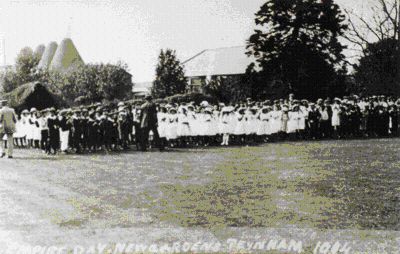 Empire Day at Newgardens 1914
Empire Day at Newgardens 1914
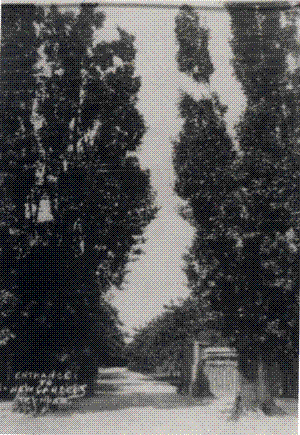 The Honeyball family were strong supporters of the local community and its welfare. Over the course of time it provided facilities and grounds for such organisations as 'The Goal Running Club', Teynham football team and Greenstreet Cricket Club. In 1920 they arranged to have premises established for the purposes of being used as a Social Club. This took the form of a wooden hut sited at the top of Teynham Lane known as the Lion Hall which was opposite the garage run by Mr Rye. Over time this facility was greatly used for committee meetings, weddings, the local library and the Boy Scouts and Cubs. In later years the hall was used for dancing classes and weekend dances. The family also took great interest in the education of the local children. Mrs Honeyball, her daughter and Mr John Honeyball served as members on the Teynham Church School's Committee with Mr James being Secretary.
The Honeyball family were strong supporters of the local community and its welfare. Over the course of time it provided facilities and grounds for such organisations as 'The Goal Running Club', Teynham football team and Greenstreet Cricket Club. In 1920 they arranged to have premises established for the purposes of being used as a Social Club. This took the form of a wooden hut sited at the top of Teynham Lane known as the Lion Hall which was opposite the garage run by Mr Rye. Over time this facility was greatly used for committee meetings, weddings, the local library and the Boy Scouts and Cubs. In later years the hall was used for dancing classes and weekend dances. The family also took great interest in the education of the local children. Mrs Honeyball, her daughter and Mr John Honeyball served as members on the Teynham Church School's Committee with Mr James being Secretary.
Over the years the family not only occupying a large 17th Century House in acres of grounds had other interests in the community by way of surrounding orchards, a coal supply business and connections with the local brickfields. More details of these with historical facts of the house and family will follow at a later date.
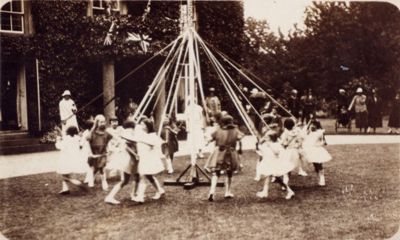
Maypole Dancing
"The Pied Piper of Hamlyn" being performed by Teynham schoolchildren at Newgardens circa 1934.
And there is more......................
Our sincere thanks are due to Mrs Brightman (nee Mills) for naming all the children in the above picture featured on the front cover of the Summer 2010 Edition (opposite); a marvellous feat considering the photograph was taken in 1934. The names are listed below. She also mentioned that her photograph records that the performance took place at Teynham Vicarage and not at Newgardens.
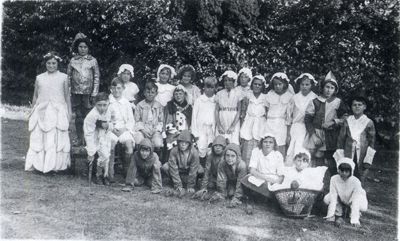 Back Row: Gladys Stevens, Ron Gates, Eileen Sillcock, Emily Francis, *Joyce Mills (Brightman), George Drury, Maise Cork, Kathleen Smeed, Freda Taylor, Doreen Cage, Mildred Sillcock, Doug Stubbings (Pied Piper), Edgar Dalton.
Back Row: Gladys Stevens, Ron Gates, Eileen Sillcock, Emily Francis, *Joyce Mills (Brightman), George Drury, Maise Cork, Kathleen Smeed, Freda Taylor, Doreen Cage, Mildred Sillcock, Doug Stubbings (Pied Piper), Edgar Dalton.
Middle Row: Ken Kinsella, Ray Wyles, Alf Lawrence, Bill Gates (Mayor).
Front Row: Majorie Couchman, Hector Philpot, Lily Jones, Jessie Baker, Geoffrey Button, Doreen Boorman.
I also thank her and her husband for a very enjoyable afternoon in which they shared memories of Teynham and Sittingbourne during which Mrs Brightman revealed she was a school friend of the daughter of Mrs Honeyball's chauffeur, Mr Hyson, and their friendship continued long afterwards until eventually 'Peggy' moved away and they lost touch. Mrs Brightman also recalled when her parents had three children under 5 whilst living in London Road when water was obtained by going to the well in the garden. This brought home how lucky we are to have the convenience of running water from a tap.
Comments from several people on the associated article, said that Col. & Mrs Honeyball had only two boys, Martyn Hearne Honeyball and Lawrence Lay Kempthorne Honeyball, and they did not have a daughter. This appears to be borne out in a copy of the Last Will and Testament of Col. Honeyball.
Secondly the Mother and Daughter referred to as serving on the School Committee were Mrs Ellen (Col. James’ stepmother) and her daughter Louisa
Mr Corks article has certainly caused some discussion amongst our readers and we thank those who have kindly been in touch over this.
Bernard Cork
Cub Reporter